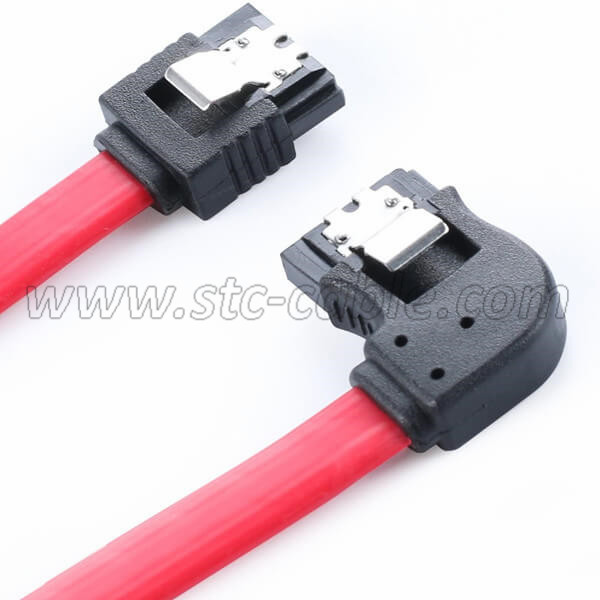How to select a SATA cable?
Selecting the right SATA cable involves understanding your specific needs and ensuring compatibility with your hardware. Here’s a guide to help you choose the best SATA cable for your setup:
1. SATA Version
SATA I (SATA 1.5 Gbps): An older version with a maximum data transfer rate of 1.5 Gbps. It's less common in modern systems.
SATA II (SATA 3.0 Gbps): Slightly newer, offering up to 3 Gbps. Still used in some older systems.
SATA III (SATA 6.0 Gbps): The most common standard in modern systems, providing up to 6 Gbps. Ensure your cable supports SATA III if you have a high-speed SSD or other high-performance storage device.
2. Cable Length
Length: SATA cables come in various lengths, typically from 18 inches to 36 inches (45 cm to 91 cm). Choose a length that suits your case layout but avoid excessively long cables as they can lead to clutter and signal degradation.
Cable Management: Shorter cables are often preferable for neat cable management and to minimize airflow obstruction.
3. Cable Quality and Build
Shielding: Look for cables with good shielding to protect against electromagnetic interference (EMI), which can affect data integrity. High-quality cables are usually better shielded.
Construction: Durable construction with reinforced connectors can improve longevity and prevent issues like loose connections.
4. Connector Type
Straight vs. Angled Connectors: SATA cables come with straight or angled connectors. Angled connectors can be useful in tight spaces or to improve cable management, especially in cramped computer cases.
Connector Fit: Ensure the connectors are compatible with your motherboard and storage device ports.
5. Data Transfer Rate
Speed: Ensure the cable supports the maximum data transfer rate of your SATA version. For example, using a SATA III cable with a SATA III device will provide the best performance.
6. Cable Type
Standard SATA Cable: Typically used for connecting hard drives, SSDs, and optical drives to the motherboard.
SATA Power Cable: Separate from data cables and used to supply power to SATA devices. Ensure you have the correct power cables if needed.
7. Compatibility
Device and Motherboard Compatibility: Verify that the cable matches the connectors on your devices and motherboard. Most SATA cables are interchangeable, but check for specific requirements.
8. Brand and Reviews
Reputable Brands: Opt for cables from well-known manufacturers to ensure reliability and performance.
Customer Reviews: Read reviews to get an idea of real-world performance and any potential issues with the cable.
9. Price and Warranty
Price: While higher prices don’t always guarantee better quality, extremely cheap cables might be less reliable. Balance cost with the features and brand reputation.
Warranty: Check if the cable comes with a warranty for added protection and peace of mind.
By considering these factors, you can select a SATA cable that meets your requirements and ensures reliable performance for your storage devices.
Send your message to us:
Post time: Sep-04-2024
